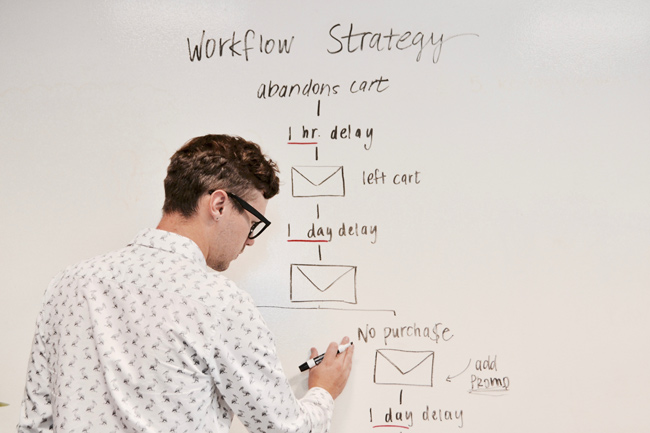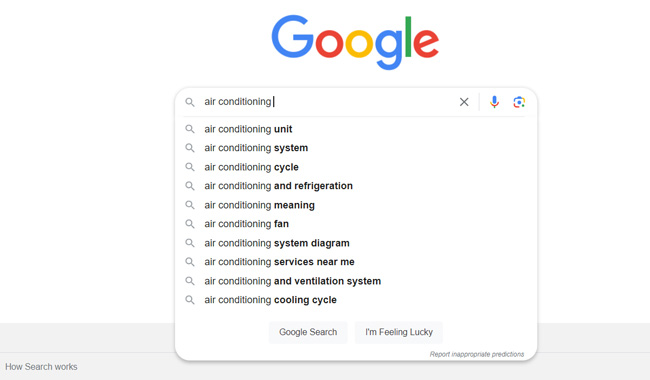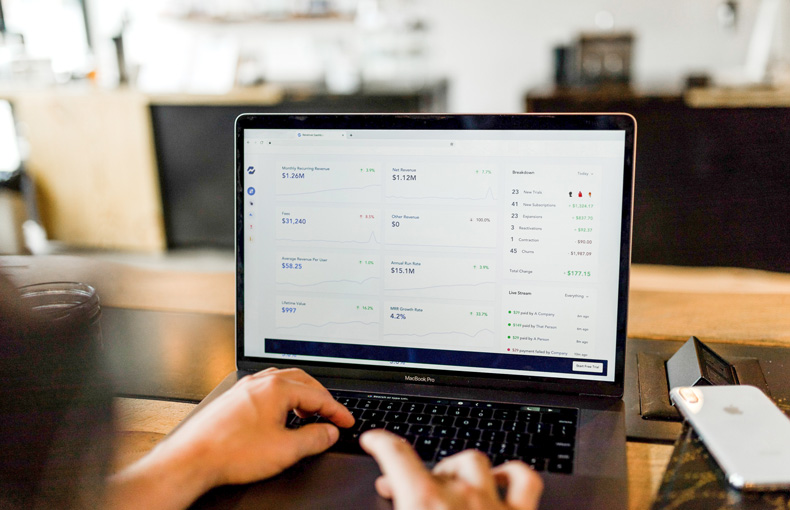What does it feel like to be appreciated by your favorite brand?
Perhaps they write you a heartfelt email, thanking you for supporting their business and consistently choosing them over their competitors.
The cherry on top is they offer you a whopping 50 percent discount on your next order.
However, becoming a loyal customer of their brand and spreading the word to your friends and family about the amazing emails they send you—that seamlessly solve your problems and entertain you—wasn’t all that difficult.
In essence, they’re rewarding you for ordering something you love, as well as for interacting and engaging with the content you love to consume.
The primary goal of an email funnel is to attract customers who share this mindset.
“Email has an ability many channels don’t: creating many valuable personal touches—at scale”
—David Newman
Today, we’re going to look into how you can build an email funnel campaign that converts leads into loyal customers. We’ll also cover:
- How to prepare for an email funnel campaign launch to maximize results
- The three stages of an email funnel and how they’re all connected
- Actionable advice on how to optimize and personalize content for a smooth customer journey
Let OnDigitalMarketing show you how to harness the power of an email funnel to convert subscribers into loyal customers.
1 – Understanding the Email Funnel and Its Benefits

An email funnel, also known as an email marketing funnel or sales funnel, is a strategic process used by businesses to convert prospects into customers through a series of automated email messages.
It’s designed to guide subscribers or leads through various stages of the buying journey and nurture them until they’re ready to make a purchase.
Think of it this way: When a prospect comes across your brand, they have a problem that needs solving, and their research has led them to you—the company with the solution.
However, they may be a bit skeptical about purchasing from you immediately, either because they’ve been burned by a company in the past or because they don’t know enough about your product to determine if it’ll provide the perfect solution.
Customers who don’t know your brand or have only a surface-level understanding of your value proposition fall in the awareness stage of the email funnel.
They’re fresh leads whose attention you have to capture and retain in order to help them progress further along your sales funnel.
For instance, imagine you work for a health and wellness brand that targets health-conscious individuals in busy professions who struggle to find time to plan and prepare healthy meals. Still, they’re motivated to make positive changes.
After drawing them to your page with an enticing article that promises to teach them how to meal prep in less than five minutes, you offer them a lead magnet in the form of an ebook titled “The Ultimate Guide to Healthy Meal Planning: Transform Your Diet and Boost Your Energy.”
To access the ebook, they must provide their email contact information.
Not only is this an efficient way to capture high-quality leads, it’s also an opportunity to guide your subscribers through the remaining stages of your email funnel.
Through a series of automated emails curated for each stage of the email funnel, you can educate, engage, and persuade prospects to take your desired action, whether it’s making a purchase, signing up for a service, or attending an event.
Lastly, it’s important to highlight that one of the greatest advantages of having an email funnel is its potential for high personalization and targeting of specific audience segments, making it a cost-effective marketing strategy.
Compared to other marketing channels, such as paid advertising, email funnels often have a lower cost per lead or conversion.
Pro Tip: Once the initial setup is complete, you can automate your email funnels, saving copious amounts of time and effort while still delivering personalized messages to a large number of subscribers.
2 – Build an Email Funnel Framework

Just like a well-executed orchestra, an email funnel contains multiple elements that work together harmoniously to create a powerful and engaging experience for the audience.
Therefore, similar to how a conductor sets the overall direction, tempo, and dynamics of a performance, you must develop a framework that guides the sequence and flow of emails to achieve specific goals, ensuring a cohesive and effective customer journey.
Here are some actionable steps you can implement to construct an email funnel framework that converts subscribers into loyal customers:
Step 1 – Define Your Subscriber Segments
“Market segmentation is a natural result of the vast differences among people.”
—David Norman
First of all, segment your subscribers according to their needs and specific interests in order to deliver personalized and targeted content.
For example, if you work for a clothing retailer, segment your subscribers based on gender, age, and shopping preferences.
By sending tailored and relevant emails to each segment, such as showcasing women’s dresses to female subscribers and men’s shirts to male subscribers, you’ll increase engagement and conversion rates.
Step 2 – Choose the Right Email Marketing Platform
Next, you’ll want automation software that is suitable for your personalization needs and offers in-depth analytics tools to track your customers’ progress in the email funnel.
Conduct thorough research and look into the unique features offered by each platform to find one that suits your needs. For instance, if you run an eCommerce business, consider using Klaviyo.
It’s a renowned platform that offers a variety of impressive features, allowing you to send personalized product recommendations and dynamic content to your subscriber list based on past interactions with your brand.
Step 3 – Create a Content Strategy
As discussed, in order to get your customer to trust you as an industry leader who can solve their problems or help them to achieve their goals, you must curate a personalized and relevant content strategy.
A well-defined content strategy ensures that your email content is valuable, engaging, and relevant to your subscribers.
For example, a software company offering project management tools could create a content strategy that includes educational blog posts, case studies, and video tutorials.
By providing valuable content that helps subscribers solve their problems or achieve their goals, you build trust and establish your brand as an industry authority, increasing the likelihood of conversions.
You can learn more about content strategy development in the video below:
Step 4 – Design Compelling Landing Pages
When subscribers click on a call-to-action in your email, they should be directed to a landing page that seamlessly continues the user journey and entices them to take a desired action.
For instance, if you send your prospects a link to an upcoming webinar, the landing page they arrive at should highlight the benefits of attending the webinar and provide a simple registration form.
An attractive and persuasive landing page with clear instructions and a strong value proposition can significantly improve conversion rates.
Step 5 – Incorporate Retargeting
Retargeting allows you to re-engage with subscribers who haven’t converted or interacted with your emails or website just yet.
For example, if a subscriber added items to their cart but abandoned the purchase, retarget them with a follow-up email that offers a limited-time discount or free shipping. This will incentivize them to complete the purchase. By reminding them of their initial interest and providing an additional incentive, retargeting helps you stay top-of-mind, increase brand recall, and ultimately drive conversions.
Bonus Idea: Consider testing different lead magnets and landing pages to optimize your email funnel and increase conversions. This allows you to experiment with various strategies and elements to find the most effective combination for your target audience.
3 – Stages of the Email Funnel
Did you know that the term “funnel” is used to describe the process because initially a large number of customers are introduced to your brand, but only a few of these prospects actually end up taking a desired action?
The funnel analogy represents the process of guiding potential customers through several stages, starting with a larger pool of people at the top and gradually narrowing down to a smaller group of highly engaged and converted individuals at the bottom.
Let’s take a closer look at each of these stages:
Awareness
Think of the awareness stage as a welcome mat that captures the attention of your target audience and introduces them to your brand or offerings.
The main goal at this stage is to generate awareness and establish a connection with subscribers, ultimately creating interest and engagement to make them more receptive to further communication.
So, how do you accomplish this?
Say you’re a marketer for a project management tool, and you’ve recently created a blog post titled, “The Ultimate Guide to Boosting Productivity: Unleash Your Superpowers.”
You’ve incorporated SEO elements and optimized it with LSI keywords, resulting in its ranking on the first page of search engine results.

The appealing nature of your headline and meta description attract readers who then click on your article and find it enjoyable to read for several reasons:
- You’ve organized the content in a clear and easy-to-read format, utilizing headings, bullet lists, and bolded important information to break up the text
- The article provides actionable advice, step-by-step instructions, and real-life examples, enabling readers to implement the provided productivity techniques
- Within the content, you’ve included a call-to-action inviting readers to sign up for your email newsletter, promising more valuable content and updates
Additionally, as readers reach the end of the blog post, you prompt them to enter their email information to receive a time management template related to the content they just read, which allows them to start being productive immediately.
Because you’ve just established yourself as an industry expert by optimizing the user’s experience from the get-go, you’ve piqued the curiosity of your audience. They’re now eager to learn more about your brand and see what else you have to offer.
Congratulations, you have successfully created awareness in your audience.
The table below provides a variety of lead magnet offerings that businesses can use to entice subscribers.
Each lead magnet type is accompanied by a brief description and highlights the potential benefits it offers to subscribers.
These lead magnets can help businesses attract and engage their audience while providing valuable resources and fostering a positive relationship with subscribers.
| Lead Magnet | Description | Benefits For Subscribers |
| eBook | In-depth digital book or guide on a specific topic | Access to comprehensive knowledge and actionable insights |
| Webinar | Online seminar or presentation offering valuable information | Opportunity to learn from industry experts and interact with like-minded individuals |
| Whitepaper | Detailed report or analysis on a specific industry or issue | Access to specialized research and industry trends |
| Checklist | Step-by-step list or guide for accomplishing a task or goal | Easy-to-follow instructions and organization |
| Templates | Pre-designed templates or forms to simplify specific tasks or processes | Time-saving and convenient resources for specific tasks |
| Case studies | Detailed analysis of real-life examples and success stories | Insights into proven strategies and practical applications |
| Infographics | Visual representations of data or information | Easy-to-digest and visually appealing content |
| Video tutorials | Instructional videos demonstrating how to perform a specific task | Visual and interactive learning experience |
Conversion
The conversion stage of an email funnel is a critical phase where the focus is on motivating subscribers to take a specific action that aligns with your business objectives.
The end goal of the conversion stage is to drive a desired action from your subscribers, whether it’s making a purchase, signing up for a service, or completing a form.
During this stage of the funnel, the desired outcome is to successfully lead subscribers to complete the intended action, thereby converting them into loyal customers or achieving the desired goal.
Conversion is crucial for generating revenue, expanding your customer base, and measuring the effectiveness of your email marketing efforts.
Let’s imagine that you work for an e-commerce company that specializes in outdoor gear. To get your leads to convert, you leverage personalization based on subscriber behavior.
You achieve this through user data analysis, by identifying a segment of subscribers who have shown a particular interest in hiking gear and accessories.
Armed with this insight, you create targeted email campaigns that cater specifically to this segment by highlighting new hiking products, showcasing customer reviews of popular hiking gear, and offering exclusive discounts on hiking equipment.
When your customers click on the links provided in the email, they’re directed to a landing page dedicated to each specific order.
For example, if they clicked on a link for a new line of camping tents, the landing page would showcase compelling images of the tents, highlight key features and benefits of each one, and provide a clear call to action for making a purchase.
It’s crucial to ensure that the landing page is free from distractions, such as excessive navigation links or unrelated content.
Moreover, minimizing the number of form fields required to complete the purchase makes the process quick and easy for visitors to convert.
Lastly, sprinkle some testimonials on the landing page to showcase customer satisfaction and boost trust.
By implementing these strategies in the conversion stage of the email funnel, your business can improve conversion rates, increase revenue, and grow its customer base.
Expert Tip: Use web analytics tools, such as Google Analytics, to track user behavior, conversion rates, and user engagement metrics. This data can help you fine-tune your email funnel and improve your digital marketing strategy.
Retention
This is the final and, quite frankly, most important stage of the email funnel.
The focus here is on maintaining and strengthening your relationship with your existing customers with the ultimate goal of keeping them engaged, satisfied, and loyal to your brand.
The objectives of the retention stage include:
- Maximizing customer lifetime value
- Encouraging repeat purchases
- Cultivating brand advocacy
- Retaining loyal customers who constantly choose your brand over competitors
One of the best ways to retain repeat customers and show them gratitude for constantly choosing you over your competitors is to create a loyalty program or membership club that offers exclusive perks and benefits.
This content can be presented through a dedicated webpage or a series of personalized emails and should emphasize the exclusive perks that members receive as part of the club, such as:
- Exclusive offers: To promote customer retention and loyalty, provide exclusive offers to your loyalty program members as a way to show appreciation and reward their loyalty.
In the instance of a clothing retailer, create a loyalty program where members receive early access to sales, special discounts, or exclusive promotions.
You simply send personalized emails to members with unique discount codes or limited-time offers, making them feel valued and incentivizing them to continue shopping with your brand. - Sneak peeks and previews: Offering members behind-the-scenes access to new product launches, upcoming features, or exclusive content can generate excitement and promote a sense of exclusivity.
For instance, as a marketer for a technology company, send loyal customers sneak peek emails that provide exclusive previews of upcoming product releases or software updates.
This exclusive access makes customers feel like valued insiders and encourages them to stay engaged and loyal to the brand. - Referral rewards: Do you recall the last time a friend recommended you buy something? You probably ended up getting what they suggested because you trust their opinion.
Referral rewards are a powerful strategy to encourage customer retention and loyalty by leveraging the power of word-of-mouth marketing.
By incentivizing club members with rewards, such as a free product or an enticing discount, for referring their friends or family to buy your product, you expand your reach and acquire new customers.
In the table below, various landing pages are listed with corresponding performance metrics.
The metrics include the number of visitors, bounce rate (percentage of visitors who leave without taking any action), average time spent on the page, conversion rate (percentage of visitors who complete a desired action), and exit rate (percentage of visitors who exit the website after visiting the landing page).
| Landing Page | Visitors | Bounce Rate | Time Spent (Avg.) | Conversion Rate | Exit Rate |
| Landing page 1 | 2,000 | 35% | 1 min 45 sec | 12% | 40% |
| Landing page 2 | 1,500 | 42% | 2 min 10 sec | 8% | 36% |
| Landing page 3 | 3,000 | 28% | 1 min 55 sec | 15% | 38% |
| Landing page 4 | 1,800 | 55% | 1 min 30 sec | 6% | 42% |
| Landing page 5 | 2,500 | 20% | 2 min 30 sec | 18% | 30% |
By tracking these metrics, businesses can assess the effectiveness of their landing pages, identify areas for improvement, and optimize their strategies to increase conversion rates and customer retention.
Convert Your Leads Into Loyal Customers by Leveraging an Email Funnel
An email funnel is a versatile and effective means of optimizing your email marketing strategy and capturing the attention of your ideal customers.
First, guide them through the awareness stage of your funnel using lead magnets to initiate them into your subscriber list.
Secondly, track their customer journey using web analytics to gather valuable information to segment and personalize your email list for targeted marketing.
Lastly, encourage your most loyal customers to join your referral program, where they can be rewarded for sharing your content with their friends and family.
At OnDigitalMarketing, we take pride in providing practical and tactical education on all aspects of digital marketing.
Our methods have been taught in 212 countries, 54 companies, and 4 undergraduate universities and have undergone rigorous peer reviews by industry experts.
Join our newsletter today to gain access to exclusive paid content, stay informed about deals with partner websites, and receive fresh tips and “how-to’s.”

